
A morning of heavy rain brought out the Sugar Ants. Not insects, but flowering trees that grow in the wetlands area near our house. I smelled the perfume of the flowers and went out behind the house to look for what was blooming.
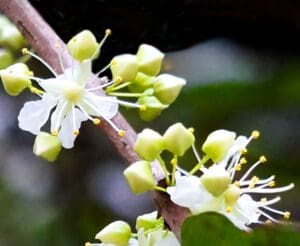
The scientific name for these Sugar Ant trees is Ginoria rohrii. They are found in Puerto Rico and the Virgin Islands as well as some of the other Caribbean islands. It is strangely sometimes called ‘bastard gri-gri’. (Non-bastard gri-gri trees, Bucida buceras, which are also called ‘black olive’, are large trees with local spiritual significance.)
I’m not clear about the ‘ant’ name either, but it might be that the flowers seem to crawl along the branches like a line of ants.
The cascade of flowers down the thin branches is actually very graceful. However, the individual little flowers are extremely fragile. When I went out later that day, after the sun came out, the petals were already drying out and shriveling up.
There was a Pearly-eyed Thrasher in among the bushy branches, and it seemed to be eating something. At first, I thought the thrasher was nibbling on the buds. Later I wondered if insects were attracted to the flower’s fragrant nectar and the thrasher was eating them. I couldn’t get close enough to tell.
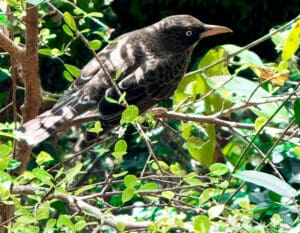
Nearby, I saw another tree that I thought at first was also a Sugar Ant. It had similar small, white flowers, but when I got closer I saw it was more like a vine.

From the way the flowers and buds grew opposite each other on the ends of the thin branches I concluded it was Hoop Vine, Trichostigma octandra. The flexible branches were traditionally used in the Virgin Islands for making baskets. The small fruits this vine produces will turn deep purple, and also line up opposite each other on the ends of the branches. I noticed that some of the flowers were already starting to produce their fruits.
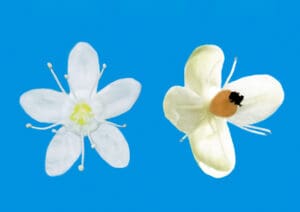
The Limber Caper flower in our yard (Capparis flexuosa) looked huge in comparison, though it turned out to be no more robust than the Sugar Ant flowers. By noon it, too, was done blooming and started sagging.

The even larger Spider Lily plant (Hymenocallis caribaea) was already blooming. It was grateful for the rain, but its flowers are sturdier and didn’t immediately start drooping when the sun shone on them.
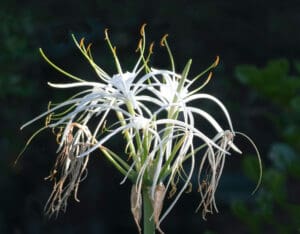
A few days later, after another morning rain shower, I noticed that the Wattapama tree down the road (Poitea florida) had suddenly blossomed. Now I really knew it was spring.
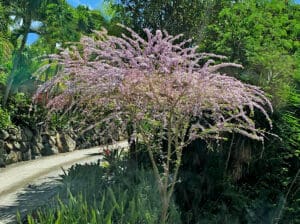
Wattapama trees are special because they are native only in the Virgin Islands and Puerto Rico. And they are delicately delightful to see.
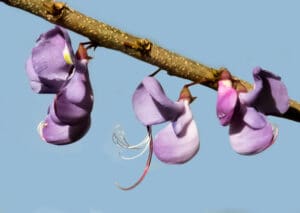
Gail Karlsson is the author of a new photo book Looking for Birds on St. John, as well as two other books about nature in the Virgin Islands – The Wild Life in an Island House, and a guide book Learning About Trees and Plants – A Project of the Unitarian Universalist Fellowship of St. John. Follow her on Instagram @gailkarlsson and at gvkarlsson.blogspot.com.





